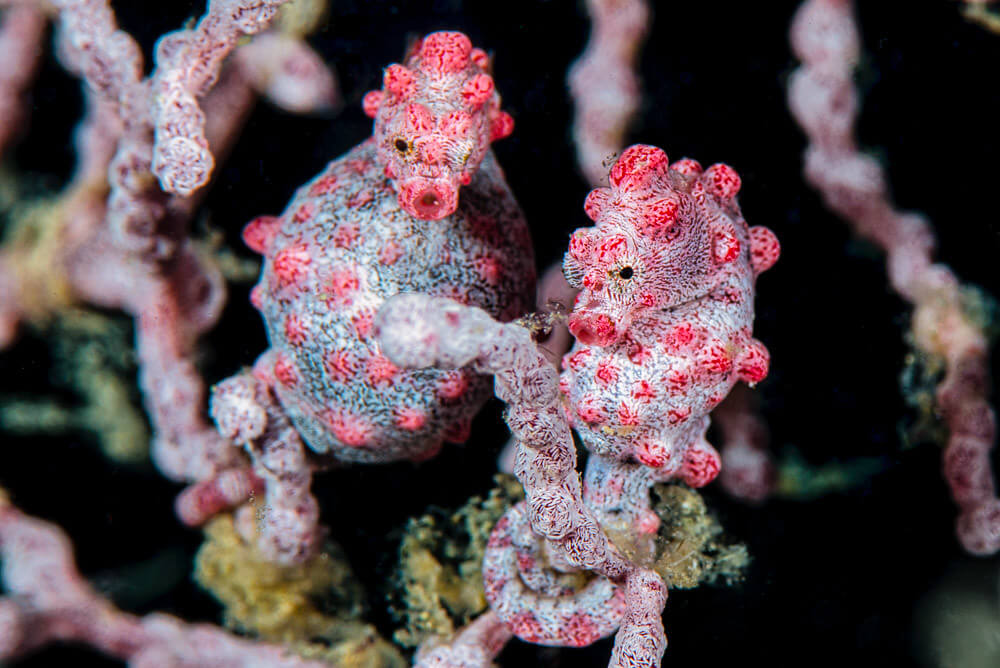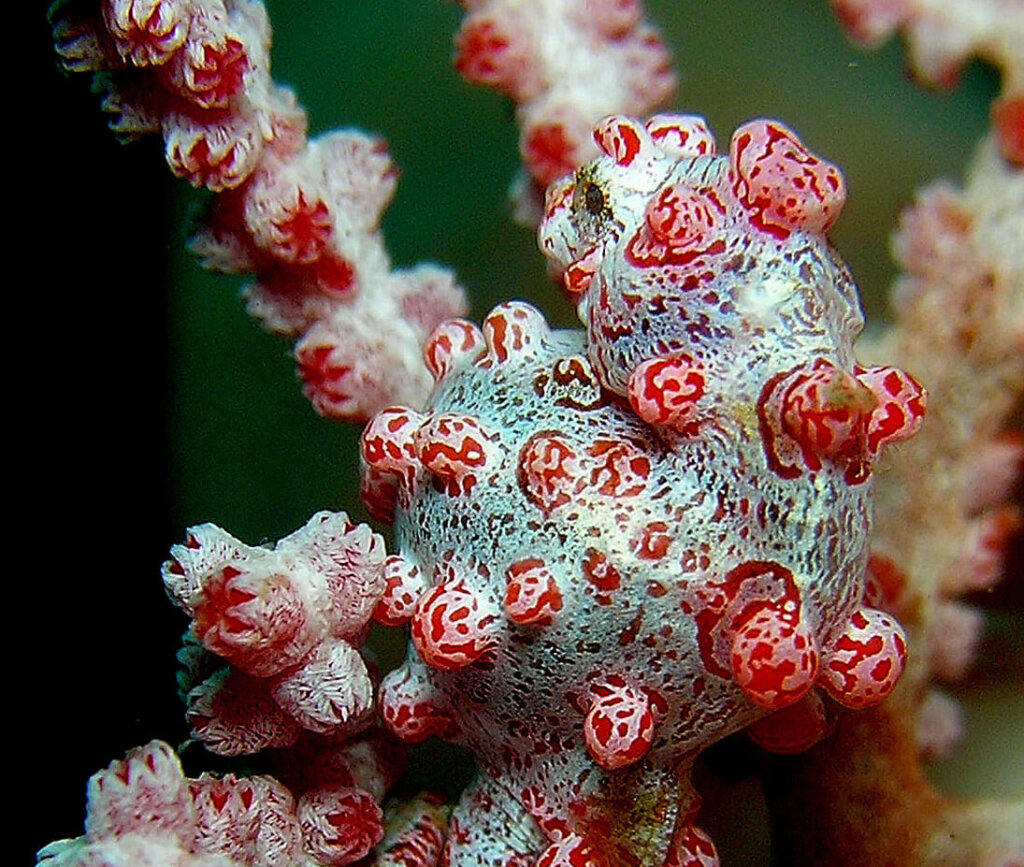All About the Pygmy Seahorse

Seahorses are one of the most well-known and popular marine animals. You may think there’s just a handful of different species, where, in fact, there are just over 140 different types that have been formally accepted. One of the most extravagant for its peculiar appearance is the pygmy seahorse, which has an impressive mimetic (imitative) ability.
The scientific name of this species is Hippocampus bargibanti. It belongs to the Syngnathidae family, which also includes pipefish. Although it’s true that the pygmy seahorse is one of the smallest specimens, the reality is that it could be considered one of the most incredible seahorses in existence. Continue reading and discover more about this peculiar specimen.
Habitat and distribution
Like other organisms of its kind, the pygmy seahorse is distributed in shallow tropical waters. Specifically, it’s found in the Indo-West Pacific Ocean, which encompasses the sea regions near Indonesia, the Philippines. Papua New Guinea, Japan, New Caledonia, and Australia.
This species is closely associated with the New Caledonian gorgonian coral (Muricella spp.), as it uses mimicry to “copy” its appearance. Due to its size, the pygmy seahorse isn’t able to move long distances, so it tends to stay in nearby coral reefs.
Physical characteristics of the pygmy seahorse
The body of the pygmy seahorse maintains the same “S” shape typical of seahorses, with the difference that it measures just under 2 centimeters (not even an inch) in length. In addition, it has different protuberances (bulges) along its body, which resembles the physical shape of the gorgonian.
In addition, they have a prehensile tail that allows them to anchor themselves to corals. Thanks to this, they’re able to go unnoticed and mimic their environment. As for its coloration, it exhibits two different variants:
- Red variant: These live around the Muricella plectana coral, so their color pattern resembles that of this organism: pale gray or purple with pink or red bulbs.
- Yellow variant: These live together with Muricella paraplectana coral, so they “mimic” the color of this species: yellow with orange bulbs.
Behavior
The pygmy seahorse usually forms large groups hidden among the vegetation and on the coral they live near. They’re quiet animals that tend to ignore other species, as this allows them to remain unnoticed by predators.
Pygmy seahorse feeding
Like other seahorses, pygmy seahorses don’t have jaws and only have a type of tubular snout with direct access to a basic digestive system. For this reason, they only feed on small prey that can easily pass through their mouths, such as amphipods, copepods, and other crustaceans. However, when they are small, they are also capable of consuming plankton.

Reproduction
Pygmy seahorses are monogamous animals that choose a single mate for their entire life. Contrary to what happens in other species of the animal kingdom, the male is in charge of looking after the young before birth. For this purpose, they have an exclusive abdominal region to incubate their eggs, which may even look like a “pouch”.
When the mating season arrives, the female transfers the eggs to the male’s belly, where the male fertilizes them and begins incubation. Although it may not seem like it, this process is complex, as the father provides the eggs with oxygen and nutrients through a special fluid secreted in his “pouch”.
The incubation process takes about 15 days, after which they will be expelled into the water in an event similar to parturition. At this point, the hatchlings will be independent and will have to survive on their own, since their parents won’t look after them.
As you can see, the pygmy seahorse is a colorful species in more ways than one. Despite its size, it’s amazing how much specialization it has developed to “mimic” the characteristics of the coral. When it comes down to it, mimicry is an excellent strategy for defenseless animals to survive successfully in these environments.
All cited sources were thoroughly reviewed by our team to ensure their quality, reliability, currency, and validity. The bibliography of this article was considered reliable and of academic or scientific accuracy.
- Pollom, R. (2017). Hippocampus bargibanti. The IUCN Red List of Threatened Species 2017: e.T10060A54904073. https://dx.doi.org/10.2305/IUCN.UK.2017-3.RLTS.T10060A54904073.en.
- Shepherd, B., Wandell, M., & Ross, R. (2017). Mating, birth, larval development and settlement of Bargibant’s pygmy seahorse, Hippocampus bargibanti (Syngnathidae), in aquaria. Aquaculture, Aquarium, Conservation & Legislation, 10(5), 1049-1063.
- Parkinson, K. (2021). Pygmy Seahorse, Hippocampus bargibanti Whitley, 1970. Recuperado el 29 de septiembre de 2022, disponible en: https://australian.museum/learn/animals/fishes/pygmy-seahorse-hippocampus-bargibanti-whitley-1970/
- Baine, M. S. P., Barrows, A. P. W., Ganiga, G., & Martin-Smith, K. M. (2008). Residence and movement of pygmy seahorses, Hippocampus bargibanti, on sea fans (Muricella spp.). Coral Reefs, 27(2), 421-421.
